Picture, above: Michael Kunze, Oswald Spengler
Introduction
It is a tradition at Counter-Currents to remember the great German philosopher of history, Oswald Spengler, on the anniversary of his birth, the 29th of May. This year, I would like to take the time to critically reflect on Spengler’s views of race within his magnum opus, The Decline of the West (1918–22), and, in particular to discuss the importance these ideas hold for modern day racialists and ethno-nationalists.
Some of these issues were touched on by Greg Johnson in his 2010 essay, “Is Racial Purism Decadent? [2],” and my arguments here are largely in response to some of the questions he poses therein. In brief, my intent with this piece is to (1) provide a brief overview of Spengler’s racial doctrine, (2) illustrate the disjunctions existing between the Spenglerian conception of “race” and materialistic ones, and (3) to explore what the Spengler being correct on the question of race means for those currently involved in the various shades of racial preservationism common among Counter-Currents’ readership.
When discussing “race,” it is common parlance among racial preservationists to adopt usages of the term derived from the great physical anthropologists and anthropometrists of the early 20th century. It is in works such as Carleton S. Coon’s The Races of Europe (1939) or Bertil Lundman’s Nordens Rastyper (1940), that the highly developed and nuanced models of the different human races are exemplified. And, it is from works such as these that contemporary discourses on race within preservationist circles find their genealogical root. Primary examples of this can be seen in the wide selection of early-twentieth century literature hosted on the website of the Society for Nordish Physical Anthropology (SNPA)[1]—an organization “founded in January 1999 […] by three university students” with the goals of reviving the theories of “the nature and phylogeny of human biodiversity” which dominated academia “prior to 1950.”[2] The SNPA’s website is presently hosted by a racial preservationist web forum, The Apricity, one of whose most active sub-forums is devoted to classifying both forum members and celebrities according to the racial typologies such as Lundman’s or Coon’s.[3] The deep relationship between pre-1950 physical anthropology and contemporary racialist discourse is hardly unique to The Apricity, and can be found throughout racialist websites and forums.
This biological view of race—focusing both on the phenotypical and genotypical variations both within and without Europe—is, however, quite far from what Spengler means when uttering the word “race.” While he does not deny that there is a biological dimension to race, Spengler does not reduce race to biology.[4] Rather, for Spengler, the notion of race was one which included the material, but supervened over it to include psychological and cultural dimensions as well. Later in life, this non-reductionist position would put him at odds with the high-profile members of the National Socialist German Worker’s Party (NSDAP), particularly with Alfred Rosenberg, whose racialism bore more in common with Lundman and Coon’s physical anthropology than with Spengler’s anti-materialism.[5] What, however, is meant by an anti-material conception of race? If Spengler did not reduce race to physical characteristics, how did he understand it?
Spenglerian “Race”
In his own words, Spengler defines a race as “the cosmic-plantlike side of life, of Being, [which] is invested with a character of duration.”[6] Race is, he tells us, “determined by the fact that the bodily succession of parents and children, the bond of the blood, forms natural groups, which disclose a definite tendency to take root in a landscape”—with “race” standing in for the “fact of a blood which circles, carried on by procreation, in a narrow or wide landscape.”[7] Prima facie, this definition of the term does not sound too far a cry from those of the physical anthropologists. However, as Spengler develops his thesis within The Decline of the West, his position emerges as one which is far closer to the völkisch landscape mystics of the Bodenbeschaffenheit movement, such as Hermann Keyserling.[8] We see this connection emphasized in the relationship Spengler postulates between race, landscape, language, and culture. In terms of the connection between race and landscape, we see Spengler advocating for a fundamentally formative and governing impact of the latter upon the former:
A race has roots. Race and landscape belong together. Where a plant takes root, there it dies also. There is certainly a sense in which we can, without absurdity, work backwards from a race to its “home,” but it is much more important to realize that the race adheres permanently to this home with some of its most essential characters of body and soul. If in that home the race cannot now be found, this means that the race has ceased to exist. A race does not migrate. Men migrate, and their successive generations are born in ever-changing landscapes; but the landscape exercises a secret force upon the plant-nature in them, and eventually the race-expression is completely transformed by the extinction of the old and the appearance of a new one. Englishmen and Germans did not migrate to America, but human beings migrated thither as Englishmen and Germans, and their descendants are there as Americans.[9]
In this, we see that Spengler’s view on race is such that it can be essentially treated as a function of a specific landscape and place—with individual races being inextricably tied to their geographic birthplaces as peoples.[10] The differences between this conception of racial formation and Darwinian models of evolution are more pronounced when we consider as well that Spengler’s philosophy treated a race not as a collection of related organisms, but rather as a single organism, and that the physical and psychological formation wrought by the landscape was collective rather than individual in nature. This collectivism is seen in the relationship Spengler posits between race and language as well, with the two complementing one another in a way analogous to body and mind in an individual:
In the limit, every race is a single great body, and every language the efficient form of one great waking-consciousness that connects many individual beings. And we shall never reach the ultimate discoveries about either unless they are treated together and constantly brought into comparison with one another.[11]
This relationship between a people’s race and its language, then, is one wherein each necessarily complements one another, with both being fundamentally necessarily to the integral unity of the singular organism. Carrying the metaphorical comparison between the individual and the people further, we see culture emerge from this race-language dyad as the natural expression of the two as they exist in the world. Spengler sees language as essentially two-fold, being divided into talk and speech, with each linguistic mode being proper to one “of the two primary Estates” such that “talk belongs with the castle [the state], and speech to the cathedral [the church].”[12] By means of its expression through these two estates, Spengler sees language as participating in the “waking relation that has Culture, [and] that is Culture.”[13] In this way, culture emerges as the activity of the interaction of the bodily race and mental language of a people with their given landscape.
This conception of mankind which Spengler elucidates is not anti-material in that it denies the material dimensions of race, but is so in that it does not treat a people as being reducible to mere physiological characteristics and differences. For Spengler, the very term “people” is not a simple designation for a group with physical or political or linguistic ties, but is “a unit of the soul,” designating a unified collective spiritual internality shared by all members of the group.[14] For Spengler, this racial soul was expresses most fully through the peoples’ modes of cultural production—namely through the arts. He saw racial virility as being intimately tied to artistic expression, with the development of High Art being “a mark of race,” rather than of learning.[15] He tells us that “the great art by which the Culture finds its tongue is the achievement of race and not that of craft.”[16] In this, Spengler is saying that the art whose expression comes to define a people (e.g. the relationship between Gothic architecture and Western man) is essentially racial in nature, and not a learned skill—insofar as the art itself is the cultural “vocalization” of the race’s experience of the world.[17]
It is with this sense of both the terms “race” and “art” that we can make sense of Spengler’s assertion that “the creators of the Doric temples of South Italy and Sicily, and those of the brick Gothic of North Germany were emphatically race-men, and so too the German musicians from Heinrich Schütz to Johann Sebastian Bach.”[18] For, in this, he is saying that these great artists throughout history exemplified through their works the inner experience of their race, and as such were great men of race. The art of these great men, which forms the core cultural expression of Western man, is for Spengler, thus seen not as the products of artistic education achieved by individuals. Rather, it is a fundamentally racial production, which can no more be separated from the race of the people who birthed it than can that race from its language, nor the race from its landscape. It is through cultural production generally, and through art particularly, that the genius of the race is made manifest—its strength and vitality being translated into forms which supervene over the brute materiality of phenotype and genotype.
Questions of Preservation
If Spengler is correct, what does this mean for contemporary racialists and racial preservationists? To begin, let us examine one of Spengler’s best known statements on the question of racial purity and preservation, from The Hour of Decision (1943):
But in speaking of race, it is not intended in the sense in which it is the fashion among anti-Semites in Europe and America to use it today: Darwinistically, materially. Race purity is a grotesque world in view of the fact that for centuries all stocks and species have been mixed, and that warlike—that is, healthy—generations with a future before them have from time immemorial always welcomed a stranger into the family if he had “race,” to whatever race it was he belonged. Those who talk too much about race no longer have it in them. What is needed is not a pure race, but a strong one, which has a nation within it. This manifests itself above all in self-evident elemental fecundity, in an abundance of children, which historical life can consume without ever exhausting the supply.[19]
In this passage, we see Spengler vehemently rejecting the purity-based racial theories prevalent within the NSDAP. But, what is the nature of this strong rejection? At its root, what we see in Spengler is a sharp contrast between his characterization of (a) the raceless man’s engaging in discourse on race and (b) the man of race’s non-discursive lived experience of race. The former discursive behavior, we see Spengler treat as degenerate and weak—the latter non-discursive behavior, as vital and strong. As Johnson notes, one of the key differences between these two behaviors is the activity’s vector; where “racial consciousness is backwards looking […] the feeling of race is forward-looking.”[20] The former is an after-the-face reflection on the past activities of race men; while the latter is the present experience of the man of race, impelling him to reach new creative heights in the cultural expression of his race.
Spengler would argue, then, that the discursive activities of contemporary racialists and racial preservationists on maintaining racial purity not only miss the point of race entirely by reducing it to mere physical characteristics, but also that such discursive action is a decadent and unhealthy way of approaching race. The man of race would view, Spengler tells us, such concerns with racial purity as entirely backwards-looking, seeking to preserve what his race once was. However, the non-discursive experience of one’s race is correspondingly forward-looking, seeking to actualize and create a strong and vital future culture. Johnson tells us that Spengler would argue that “the racial purist looks to the past, not the future, because he does not have the vitality in him necessary to create a future.”[21] The racial consciousness of the preservationist is defined entirely by his race’s past—a past which is, by definition, immutable and fixed; his engagement with race, then, is wholly discursive, merely talking of past glories and present ills. It is not defined by the action born of the inner experience of race-feeling itself.
These unhealthy manifestations of discursive preoccupations with racial purity run counter to the healthy non-discursive race-feeling and its resulting cultural production not because the discourse of the purist is wrong. Indeed, as Johnson argues, “decadent people can be right, and healthy people can be wrong.”[22] However, in terms of effective action, there are more important things than simply holding “correct” opinions, or engaging in “correct” discourses. What is needed so much more than mere discourse is the action which springs naturally from the healthy man of race’s vitality. In, correctly in my estimation, judging “White nationalism in America” as “as overwhelmingly degenerate movement,” Johnson concludes his musings on Spengler by asking the question: “what would a vital white nationalism look like?” We know now what a movement whose primary activity is discourse on race looks like; it is what we have today—a decadent movement which produces a near endless stream of discussion and literature on the topic of race. How would a vital and healthy movement differ from this? Johnson speculates:
A vital white nationalist movement would be a utopian, progressivist, eugenicist mythical-cultural phenomenon. It would not be founded on empirical studies of how race influences culture. It would not propagate itself through academic conferences and policy studies. It would be founded on a grand culture-creating, race-shaping myth, propagated through art and religion, that enthralls and mobilizes a whole people. It would be less concerned about the race we were or the race we are than about the race we can become.[23]
In terms of Spenglerian views on the question of race, we can imagine a healthy movement as one whose primary activity is not discourse, but cultural production. A healthy movement would not necessarily be wholly unconcerned with “correct” discourse on race, but its dominant and overriding concern would be the cultural production stemming from the non-discursive experience of the vital feeling of one’s race. The healthy movement would by defined not by polemic literature on the “dangers” of race-mixing, but by grand works of art expressing the inner experience of the race. It would be a movement whose “celebrities” were not the authors of books on race, but men whose entire being was devoted to the furtherance of their race’s artistic expression.
In this way, Richard Wagner, stands forth as the near-ideal example of Spengler’s man of race. Wagner was not unconcerned with the question of race, or with discourse on race, but when we look at the scope of his life and work, his activities were overwhelmingly defined by cultural production rather than discourse. We remember Wagner not primarily for his writings on race. Rather, we remember him because the art he produced was a force of nature, which expressed to purely the soul of his race that it drew together thousands upon thousands of the German people—giving rise to sweeping cultural movements. Taking Wagner as our paradigm, then, we should perhaps revise our questions. Rather than asking what would a vital movement look like, perhaps we should ask how can I become a Spenglerian man of race? It is my contention that if we are to succeed—to win, as Johnson puts it—it will not be through the endless discourse we have engaged in thus far; nor will it be through grand plans to re-shape the movement from the top-down.
Our success will come through individual change and progress. It is not necessary that we cease engaging in racialist discourse, or that such discourses are wrong, but this is not the means of our victory. Rather than through imitation of racialist authors like Francis Parker Yockey, our success will come through the imitation of cultural producers like Wagner. Naturally, such a movement would be characterized by physical vitalism and fecundity as well, but it would not be limited to such. It would be equally—if not moreso—characterized by cultural fecundity and strength. In this way, a reevaluation of our very idea of “race” in Spenglerian terms proves to be of the utmost importance in providing a pathway to success.
Bibliography
Bolton, Kerry. “Oswald Spengler: May 29, 1880–May 8, 1936.” Counter-Currents Publishing: Books Against Time. 29 May 2012. http://www.counter-currents.com/2012/05/oswald-spengler/ [3] [accessed 25 May 2015].
Borthwick, Stephen M. “Historian of the Future: An Introduction to Oswald Spengler’s Life and Words for the Curious Passer-by and the Interested Student.” Institute for Oswald Spengler Studies. https://sites.google.com/site/spenglerinstitute/Biography [4] [accessed 25 May 2015].
Brown, David Henry. “Metaphysical Presuppositions in Spengler’s Der Untergang des Abendlandes.” PhD diss., McMaster University 1979.
Coon, Carleton S. The Races of Europe. New York: The Macmillan Company, 1939. http://www.theapricity.com/snpa/racesofeurope.htm [5]
Dreher, Carl. “Spengler and the Third Reich.” The Virginia Quarterly Review: A National Journal of Literature and Discussion. 15, no. 2 (1939). http://www.vqronline.org/essay/spengler-and-third-reich [6] [accessed 25 May 2015].
Duchesne, Ricardo. “Oswald Spengler & the Faustian Soul of the West, Part 1.” Counter-Currents Publishing: Books Against Time. 2 January 2015. http://www.counter-currents.com/2015/01/oswald-spengler-and-the-faustian-soul-of-the-west-part-1/ [7] [accessed 25 May 2015].
———. “Oswald Spengler & the Faustian Soul of the West, Part 2.” Counter-Currents Publishing: Books Against Time. 5 January 2015. http://www.counter-currents.com/2015/01/oswald-spengler-and-the-faustian-soul-of-the-west-part-2/ [8] [accessed 25 May 2015].
“Essays & Excerpts.” Society for Nordish Physical Anthropology. http://www.theapricity.com/snpa/index2.htm [9] [accessed 25 May 2015].
Farrenkopf, John. “Spengler’s Historical Pessimism and the Tragedy of Our Age.” Theory and Society 22, no. 3 (1993): 391–412.
———. “Spengler’s Theory of Civilization.” Thesis Eleven: Critical Theory and Historical Sociology 62, no. 1 (2000): 23–38.
“Introduction.” Society for Nordish Physical Anthropology. http://www.theapricity.com/snpa/introduction.htm [10] [accessed 25 May 2015].
Johnson, Greg. “Is Racial Purism Decadent?” Counter-Currents Publishing: Books Against Time. 10 July 2010. http://www.counter-currents.com/2010/07/is-racial-purism-decadent/ [2] [accessed 25 May 2015].
Lundman, Bertil. Nordens Rastyper: Geografi och Historia. Verdandis Småskrifter 427. Stockholm: Albert Bonnier, 1940.
Noll, Richard. The Jung Cult: Origins of a Charismatic Movement. Princeton: Princeton University Press, 1994.
Spengler, Oswald. The Decline of the West. 2 vols. Revised edition. Translated by Charles Francis Atkinson. London: George Allen & Unwin, 1961.
———. The Hour of Decision: Germany and World-Historical Evolution. Translated by Charles Francis Atkinson. Honolulu: University Press of the Pacific, 2002.
Notes
[1] [11] “Essays & Excerpts,” Society for Nordish Physical Anthropology.
[2] [12] “Introduction,” Society for Nordish Physical Anthropology.
[3] [13] “The Apricity: A European Community.”
[4] [14] Farrenkopf, “Spengler’s Historical Pessimism and the Tragedy of Our Age,” 395; Borthwick, “Historian of the Future”; Johnson, “Is Racial Purism Decadent?”.
[5] [15] Dreher, “Spengler and the Third Reich”; Bolton, “Oswald Spengler.”
[6] [16] Spengler, The Decline of the West, 2:113.
[7] [17] Ibid.
[8] [18] Noll, The Jung Cult, 95–103.
[9] [19] Spengler, The Decline of the West, 2:119.
[10] [20] Brown, “Metaphysical Presuppositions in Spengler’s Der Untergang des Abendlandes,” 223.
[11] [21] Spengler, The Decline of the West, 2:114.
[12] [22] Spengler, The Decline of the West, 2:153.
[13] [23] Ibid.
[14] [24] Spengler, The Decline of the West, 2:165.
[15] [25] Spengler, The Decline of the West,
[16] [26] Ibid.
[17] [27] Farrenkopf, “Spengler’s Historical Pessimism and the Tragedy of Our Age,” 396; Farrenkopf, “Spengler’s Theory of Civilization,” 24–25.
[18] [28] Spengler, The Decline of the West, 2:118–19.
[19] [29] Spengler, The Hour of Decision, 219.
[20] [30] Johnson, “Is Racial Purism Decadent?”
[21] [31] Johnson, “Is Racial Purism Decadent?”
[22] [32] Johnson, “Is Racial Purism Decadent?”
[23] [33] Johnson, “Is Racial Purism Decadent?”




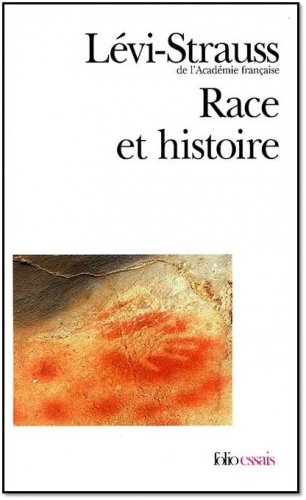
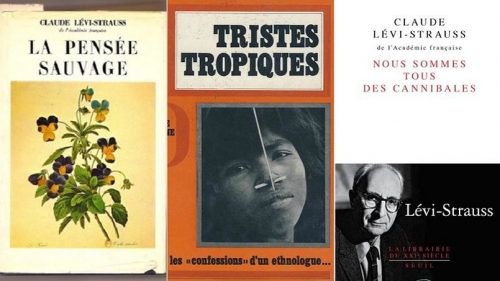
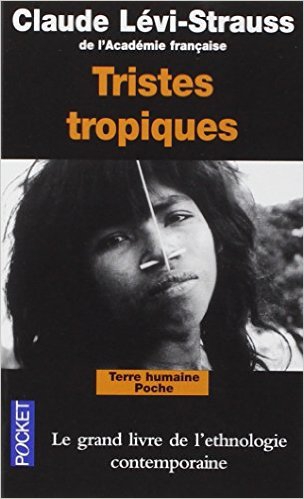 Toute la subtilité de l'auteur, qui parle en scientifique et non en donneur de leçon de morale, consiste à rappeler qu'en l'état actuel de nos connaissances scientifiques, il n'y a aucune corrélation entre le phénomène génétique et le phénomène culturel, compris en sa large acceptation. On peut donc en première approche qualifier la pensée de Lévi-Strauss comme un structuralisme scientifique, a-raciste (et non anti-raciste comme on le verra par la suite). En effet là où le raciste proclame « La culture est conséquence déterminée de la biologie », Lévi-Strauss ne répond pas, comme les penseurs de l’UNESCO, héritiers de l'Universalisme chrétien dévoyé « Cette vision de l'Homme est infondée car immorale », mais que son manque de fondement provient de son manque de consistance scientifique, en tant qu'inférence logique déterminée et confirmée par l'expérience. Les sciences de la seconde moitié du XXe siècle n'auront malheureusement pas apporté plus de réponse à ces questions, déclarées taboues par les forces politiques qui gouvernent l'Occident depuis la sortie de la guerre.
Toute la subtilité de l'auteur, qui parle en scientifique et non en donneur de leçon de morale, consiste à rappeler qu'en l'état actuel de nos connaissances scientifiques, il n'y a aucune corrélation entre le phénomène génétique et le phénomène culturel, compris en sa large acceptation. On peut donc en première approche qualifier la pensée de Lévi-Strauss comme un structuralisme scientifique, a-raciste (et non anti-raciste comme on le verra par la suite). En effet là où le raciste proclame « La culture est conséquence déterminée de la biologie », Lévi-Strauss ne répond pas, comme les penseurs de l’UNESCO, héritiers de l'Universalisme chrétien dévoyé « Cette vision de l'Homme est infondée car immorale », mais que son manque de fondement provient de son manque de consistance scientifique, en tant qu'inférence logique déterminée et confirmée par l'expérience. Les sciences de la seconde moitié du XXe siècle n'auront malheureusement pas apporté plus de réponse à ces questions, déclarées taboues par les forces politiques qui gouvernent l'Occident depuis la sortie de la guerre.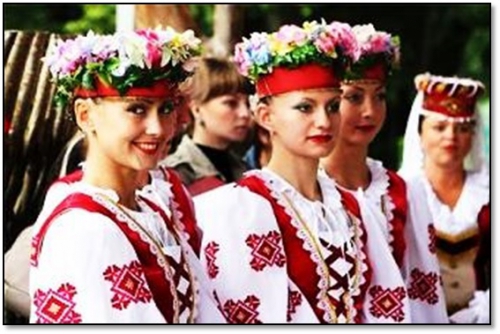
 Lévi-Strauss distingue pour les besoins de ses démonstrations trois types de culture que chaque société peut, de son propre point de vue, soumettre à son entendement : 1. Celles qui sont ses contemporaines, mais qui se trouvent à un autre lieu du globe ; 2. Celles qui se sont manifestées dans un espace commun à la sienne, mais à des temps antérieurs ; 3. Enfin celles qui cumulent à la fois l’éloignement spatial et temporel. En ce qui concerne les cultures du troisième groupe, le problème s’avère réglé d’avance : quoiqu’elle compose, selon les chiffres de l’ethnologie moderne, 90 à 99% de la totalité des civilisations qui ont existé depuis l’éveil de l’homme à la culture, la majorité ne sera jamais connue de façon satisfaisante, particulièrement en raison du manque de traces écrites qui la caractérise. Toute assertion globale à leur endroit apparait dès lors douteuse pour l’esprit scientifique.
Lévi-Strauss distingue pour les besoins de ses démonstrations trois types de culture que chaque société peut, de son propre point de vue, soumettre à son entendement : 1. Celles qui sont ses contemporaines, mais qui se trouvent à un autre lieu du globe ; 2. Celles qui se sont manifestées dans un espace commun à la sienne, mais à des temps antérieurs ; 3. Enfin celles qui cumulent à la fois l’éloignement spatial et temporel. En ce qui concerne les cultures du troisième groupe, le problème s’avère réglé d’avance : quoiqu’elle compose, selon les chiffres de l’ethnologie moderne, 90 à 99% de la totalité des civilisations qui ont existé depuis l’éveil de l’homme à la culture, la majorité ne sera jamais connue de façon satisfaisante, particulièrement en raison du manque de traces écrites qui la caractérise. Toute assertion globale à leur endroit apparait dès lors douteuse pour l’esprit scientifique.
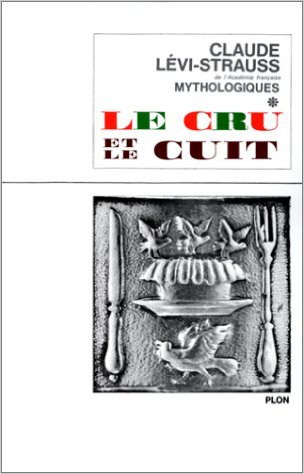 Lévi-Strauss affirme que c'est l'objectivité des critères de hiérarchisation, intime à la pensée occidentale, qui permettent de la fonder, et qui peuvent se ramener, selon Leslie White6, à deux principaux : 1. L’accroissement continuel de la quantité d’énergie disponible par habitant et 2. La protection et la prolongation de la vie humaine capacitive. Ainsi tout homme désire, sauf cas pathologique, prolonger sa vie en pleine santé sur Terre. Quelle réponse plus admirable a été fournie à cet enjeu que la médecine et le mode de vie occidental ne sauraient offrir ? Toutes les sociétés (c'est une structure universelle) requièrent un accroissement de connaissances, de techniques et de savoir-faire afin de modeler leurs environnements selon leurs normes. Quel outil plus raffiné et plus efficace à cet effet que sont la Mathématique, la Science et la Technique occidentales ? Nous pourrions même aller plus loin (mais ce serait déjà rentrer dans une forme de subjectivisme idéologique) en posant pour principe qu'il y a en tout être humain une Volonté d'émancipation individuelle du cadre des méta-structures collectives, et que l'individualisme européen triomphant et prosélyte offre un médium privilégié à cette émancipation.
Lévi-Strauss affirme que c'est l'objectivité des critères de hiérarchisation, intime à la pensée occidentale, qui permettent de la fonder, et qui peuvent se ramener, selon Leslie White6, à deux principaux : 1. L’accroissement continuel de la quantité d’énergie disponible par habitant et 2. La protection et la prolongation de la vie humaine capacitive. Ainsi tout homme désire, sauf cas pathologique, prolonger sa vie en pleine santé sur Terre. Quelle réponse plus admirable a été fournie à cet enjeu que la médecine et le mode de vie occidental ne sauraient offrir ? Toutes les sociétés (c'est une structure universelle) requièrent un accroissement de connaissances, de techniques et de savoir-faire afin de modeler leurs environnements selon leurs normes. Quel outil plus raffiné et plus efficace à cet effet que sont la Mathématique, la Science et la Technique occidentales ? Nous pourrions même aller plus loin (mais ce serait déjà rentrer dans une forme de subjectivisme idéologique) en posant pour principe qu'il y a en tout être humain une Volonté d'émancipation individuelle du cadre des méta-structures collectives, et que l'individualisme européen triomphant et prosélyte offre un médium privilégié à cette émancipation.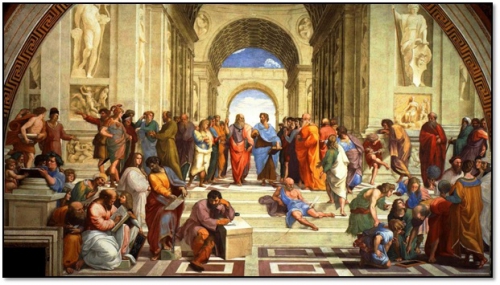
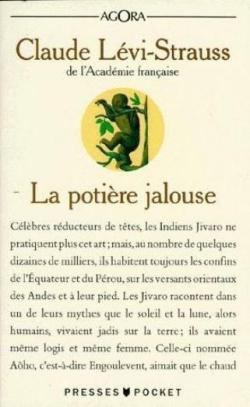 Bien sûr le relativisme culturel dont fait preuve Lévi-Strauss pour les besoins de ses démonstrations parait de prime abord en contradiction avec son appel renouvelé à maintenir coûte que coûte nos spécificités civilisationnelles. Mais dans les temps troubles que nous traversons actuellement, le paradoxe est loin d’être insoluble.
Bien sûr le relativisme culturel dont fait preuve Lévi-Strauss pour les besoins de ses démonstrations parait de prime abord en contradiction avec son appel renouvelé à maintenir coûte que coûte nos spécificités civilisationnelles. Mais dans les temps troubles que nous traversons actuellement, le paradoxe est loin d’être insoluble.
 del.icio.us
del.icio.us
 Digg
Digg
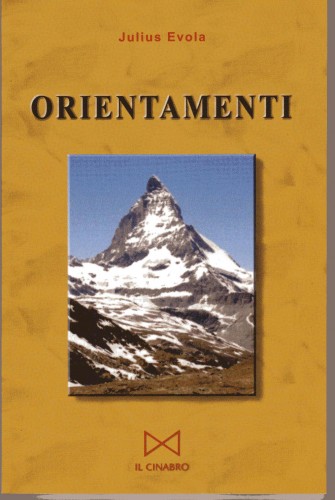 Since the rise of physical anthropology, the definition of the term “race” has undergone several changes. In 1899, William Z. Ripley stated that, “Race, properly speaking, is responsible only for those peculiarities, mental or bodily, which are transmitted with constancy along the lines of direct physical descent.” 1 In 1916, Madison Grant described it as the “immutability of somatological or bodily characters, with which is closely associated the immutability of physical predispositions and impulses.”2 He was echoed a decade later by German anthropologist Hans F.K. Gunther, who in his Racial Elements of European History said, “A race shows itself in a human group which is marked off from every other human group through its own proper combination of bodily and mental characteristics, and in turn produces only its like.”3 According to the English-born Canadian evolutionary psychologist J. Philippe Rushton:
Since the rise of physical anthropology, the definition of the term “race” has undergone several changes. In 1899, William Z. Ripley stated that, “Race, properly speaking, is responsible only for those peculiarities, mental or bodily, which are transmitted with constancy along the lines of direct physical descent.” 1 In 1916, Madison Grant described it as the “immutability of somatological or bodily characters, with which is closely associated the immutability of physical predispositions and impulses.”2 He was echoed a decade later by German anthropologist Hans F.K. Gunther, who in his Racial Elements of European History said, “A race shows itself in a human group which is marked off from every other human group through its own proper combination of bodily and mental characteristics, and in turn produces only its like.”3 According to the English-born Canadian evolutionary psychologist J. Philippe Rushton:
